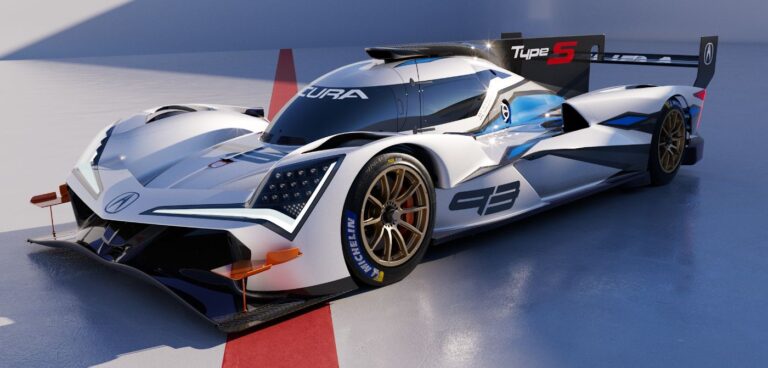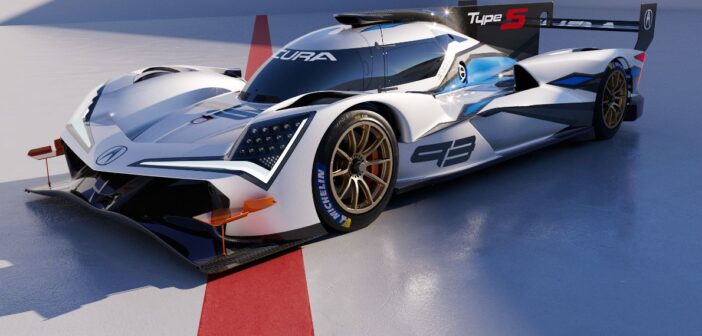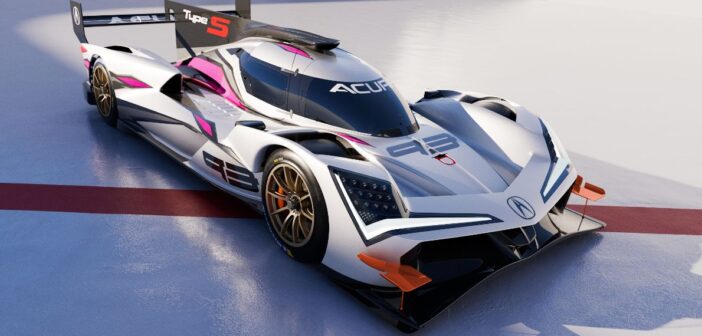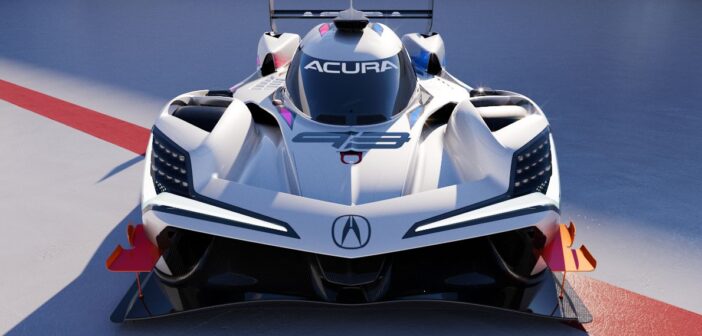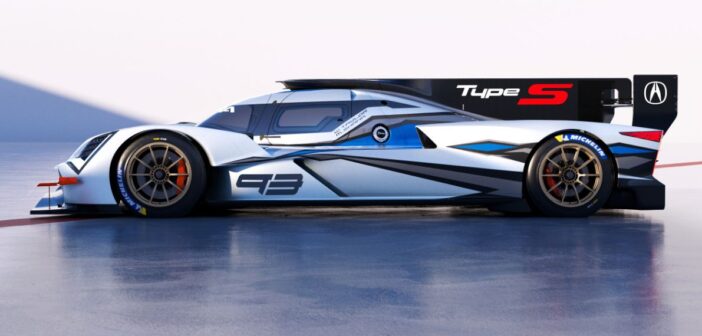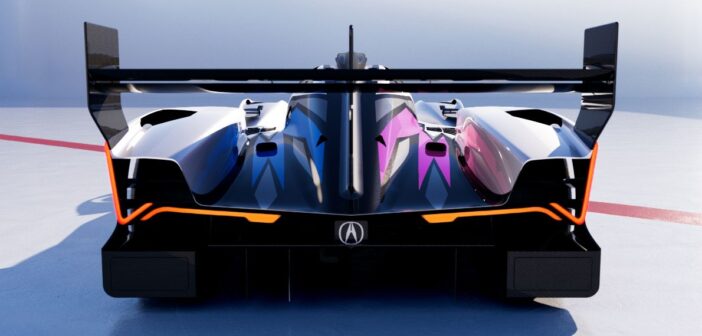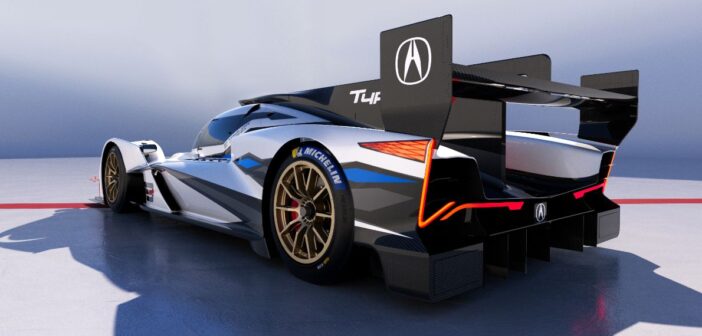Acura has released the first details of the development program for its ARX-06 LMDh sportscar, which will make its competition debut next January at the 2023 Daytona 24 in the GTP class.
Acura, via HPD (Honda Performance Development), developed the car’s bodywork and 2.4-liter, turbocharged V6 engine (augmented by the spec LMDh hybrid) based around the ORECA (ORganisation Exploitation Compétition Automobiles) LMDh chassis.
David Salters, HPD president and technical director, said, “The new Acura ARX-06 has elements of our Indy-winning technology, Honda Formula One technology and Rolex 24-winning technology in it. This was achieved using HPD’s world-class simulation, design, development and manufacturing technologies; that our own engineers have developed, tested and validated. We are very proud of that. Now the challenge and hard work really starts, including grueling 24 hour simulations, and learning how to maximize all aspects of performance.”
New V6
The 90° V6 engine, dubbed the AR24e, is a bespoke 2.4-liter, twin-turbocharged direct injection unit, designed and developed in house by HPD. It is the smallest displacement ICE HPD has produced for endurance racing and has been specifically engineered to handle the sustainable fuel used in both IMSA and WEC.
“We’ve taken the challenge presented by this new rule package from IMSA, and developed what we believe is a very competitive solution,” explained Pierre Descamps, who led HPD’s powertrain design team for the ARX-06. “We’ve gone in a new direction for HPD in the design of the ICE. It is still a V6, which of course for Honda is well-known, but we have incorporated several new elements which we believe will make best use of the electric MGU and battery pack. Our new engine will rev to the maximum 10,000rpm set by the rules, so it also makes a wonderful sound!”
HPD and Acura elected to continue their successful relationship with ORECA. Since moving into chassis design and construction in 2007, ORECA has produced a series of winning sports prototypes, including the Acura ARX-05. “We’re extremely pleased with our relationship with ORECA,” said Mark Crawford, HPD large project leader for the ARX-06. “They’ve been great partners throughout both our ARX-05 DPi program and now with the ARX-06. The GTP [Grand Touring Prototype] project has brought with it a new set of challenges and, while you certainly can see the Acura ‘family resemblance’ to our previous collaboration, the ARX-06 is an entirely new design.”
Simulation reliance
HPD’s Vehicle Performance Group worked closely with the ORECA design team and engineers to simulate chassis layout geometries and lap time optimization studies. They also “coded” the new car into HPD’s static and dynamic driver-in-the-loop simulators to begin development of the car’s vehicle dynamics and vehicle dynamic control systems.
The car relies on clean sheet hybrid powertrain control system, brake-by-wire and vehicle dynamics control system – all written in-house at HPD. This control system architecture was implemented on a Formula 1-spec ECU hardware platform. HPD says it also utilizes its own custom, in-house developed ultra-high speed datalogging system.
Salters praised the ORECA-HPD relationship during the development process: “I would like to note the stand-out collaboration between the ORECA and HPD engineering groups. Working with the extremely talented ORECA engineers on chassis and aero design and powertrain installation has been a real pleasure. Both groups have put their heart and soul into this intense project and sophisticated race car.”
Brand design intent
HPD’s aerodynamicists and in-house CFD aero engineers worked with the Acura styling studio and ORECA to help develop the styling and maximize the aerodynamic performance envelope of the ARX-06, while keeping it within the homologation boxes as specified by IMSA and the FIA.
“The process we used in creating the exterior design for the Acura ARX-06 is exactly the same as how we create a new Acura passenger vehicle,” said Dave Marek, Acura executive creative director. “As part of our Precision Crafted Performance Brand Promise, we treated it as an integral part of our lineup. The same world-class stylists that lead Acura production car design created initial sketches, then pared those down to several potential designs. Next, we created a scale model, did aero and wind tunnel model testing, and brought HPD and our partner teams in for their feedback,” Marek recounted. “The design continued to be refined throughout the testing and evaluation process, until we came up with a final treatment that met our performance goals while maintaining all-important Acura styling cues. It’s been an exciting process.”
Driver and team input was also sought throughout the design process. For example, the placement of the rearview mirror was revised to benefit both aero performance and ergonomics. Using VR headsets, the drivers were able to sit in the car virtually and recommend a much lower placement for the side mirrors, improving both the aero efficiency of the ARX-06 and visibility for the drivers.
Acura ARX-06 development process
“We started with the rule book, a challenging spirit and an open mind,” said Salters. “Then our engineers got to work, utilizing all of the vehicle performance, powertrain simulation and development tools we have at HPD to address the critical areas for performance, including weight, power, packaging and center of gravity.”
During the initial stages of the project, the HPD Vehicle Performance Group used simulation tools to determine the overall vehicle envelope and key requirements that would need to be met to maximize performance. Efficiency, power, weight distribution, aero balance, center of gravity, tire energy, hybrid management and chassis stiffness were some of the parameters analyzed to determine the core architecture guidelines.
This process solidified the architecture for the ICE, such as its displacement, fuel injection and turbocharging strategy, and the intercooler layout. The Design Group then schemed different concepts and weight aspects over a three-week evaluation period before the concept was then finalized in a single meeting of HPD technical leaders, who then signed off on the project.
Prototype parts were designed and produced for testing using HPD’s in-house single cylinder research engine over a compressed four-week schedule. The HPD Development Group tested these concepts, analyzing performance, efficiency, combustion characteristics, heat rejection and other parameters. Results were analyzed and compared to the initial simulations – according to the development team, the simulation results were spot-on and validated.
Simulation work also was carried out to assess what the team refers to as a novel intercooler packaging and induction concept to reach the performance targets, meeting the 500kW output without running into issues such as knocking. Just five months after the initial simulation and concept study, the ICE ran on the dyno and met all performance targets.
The complete control system – written jointly by HPD’s Electrical Control Systems group, Vehicle Performance and Performance Application groups – was prototyped in HPD’s hardware-in-the-loop and driver-in-the-loop simulator systems.
The control system was then taken to the company’s transient dyno facility at HPD where engineers tested the complete hybrid powertrain – ICE-Hybrid MGU-Gearbox. This bench testing included including running complete simulated race events, including 12- and 24-hour endurance runs with shifting, acceleration and braking all reproduced on the dyno.
Concurrently, the Aerodynamic Group at HPD made use of its in-house CFD capability during the design phase to optimize aerodynamic and cooling performance. The group worked closely with ORECA on the overall aerodynamic concept of the ARX-06. This was recently validated in a full-scale wind tunnel test.

